The underlying difficulty seems to be the belief that some current must flow to measure voltage. This is false. Since you are a physics teacher, I'll explain by making analogies to other physical systems.
Say we have two sealed vessels, each filled with some fluid. We want to measure the pressure difference between them. Like voltage, relative pressure is a difference in potentials.
We could connect them with a tube which is blocked in its middle by a rubber diaphragm. Some fluid will move initially, but only until the diaphragm stretches to balance the forces of the fluids acting on it. We can then infer the pressure difference from the deflection of the diaphragm.
This meets the definition of infinite resistance in the electrical analogy, since once this system has reached equilibrium, no current flows (neglecting diffusion through the diaphragm, which can be made arbitrarily small and isn't necessary for the operation of the device).
However, it does not qualify as infinite impedance, because it has non-zero capacitance. In fact, this device is exactly Bill Beaty's favorite mental model of a capacitor:

There are, in fact, devices that measure voltage that work analogously. Most electroscopes fall into this category. For example, the pith ball electroscope:

Many of these devices are very old and require very high voltages to work. However, modern MOSFETs are essentially the same thing at a microscopic scale in that their input looks like a capacitor. Instead of deflecting a ball, the voltage modulates the conductivity of a semiconductor:

The MOSFET works by altering the conductivity of a channel between the source (S) and drain (D) as a function of the voltage between the gate (G) and the bulk (B). The gate is separated from the rest of the transistor usually by a thin layer of silicon dioxide (white in picture above), a very good insulator, and like the diaphragm device before, whatever very small leakage there is isn't relevant to the operation of the device. We can then measure the conductivity of the channel, and the current flowing in this channel can be supplied by a separate battery and not the device under test. Thus, we can measure a voltage with an extremely high (theoretically infinite) input resistance.

simulate this circuit – Schematic created using CircuitLab



